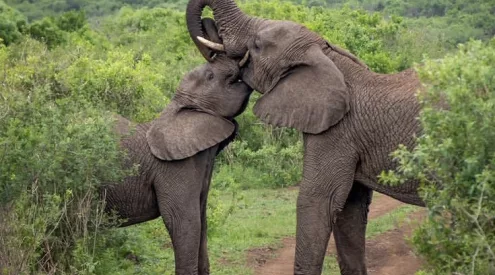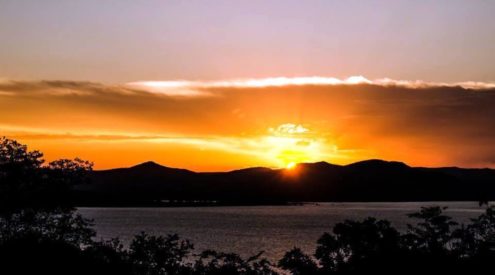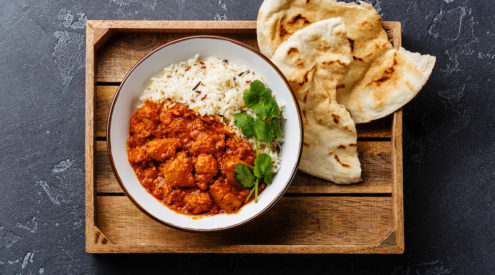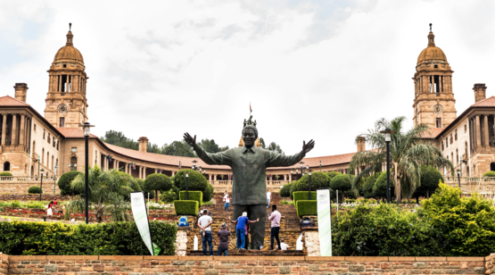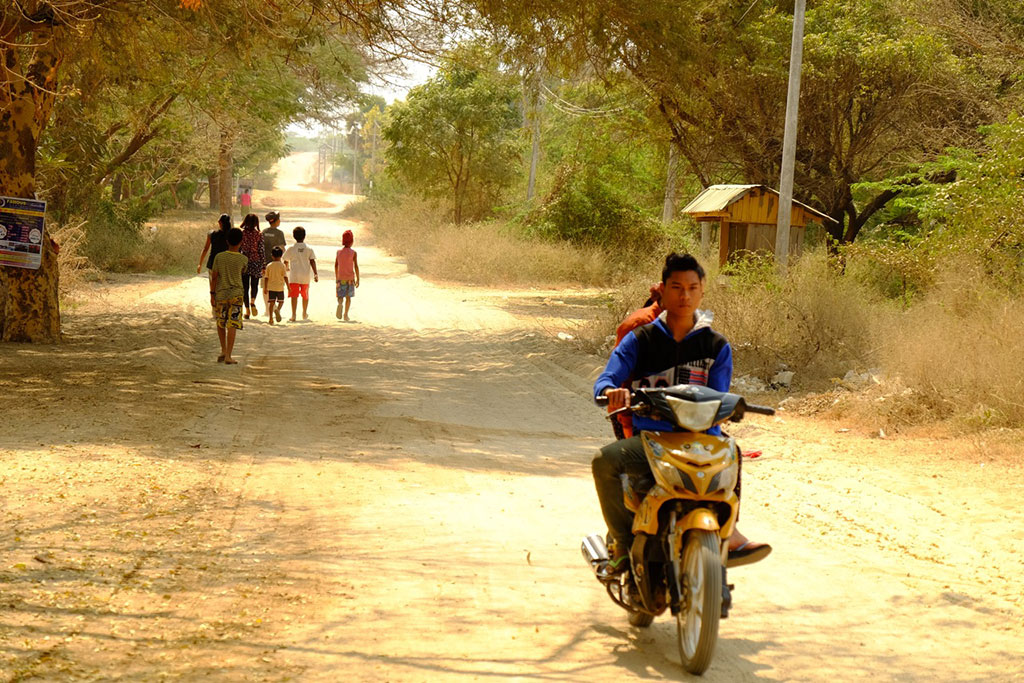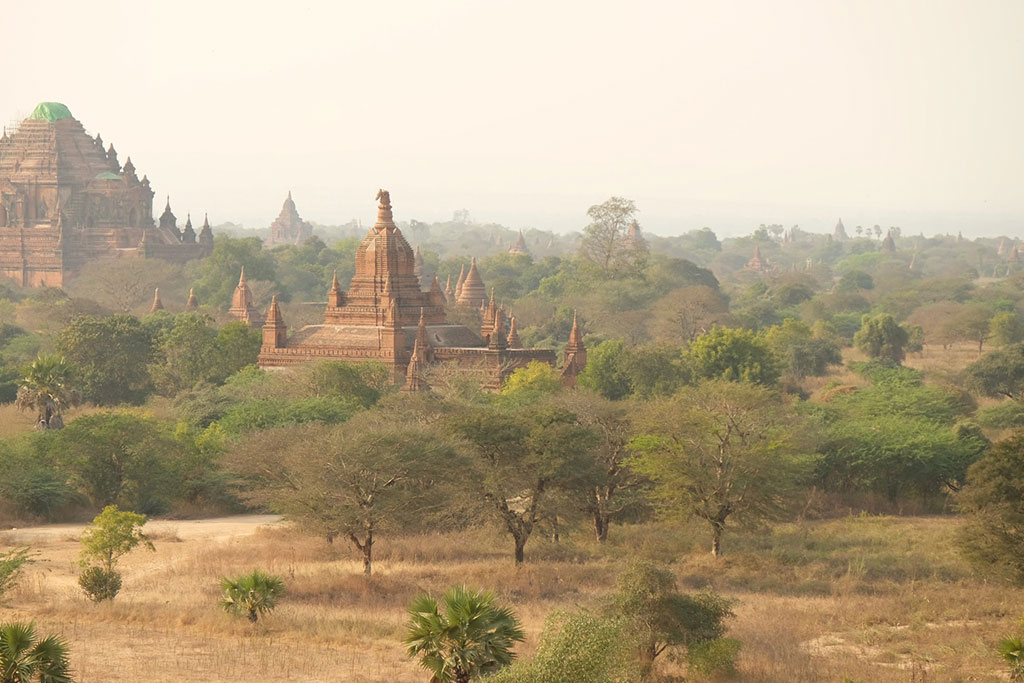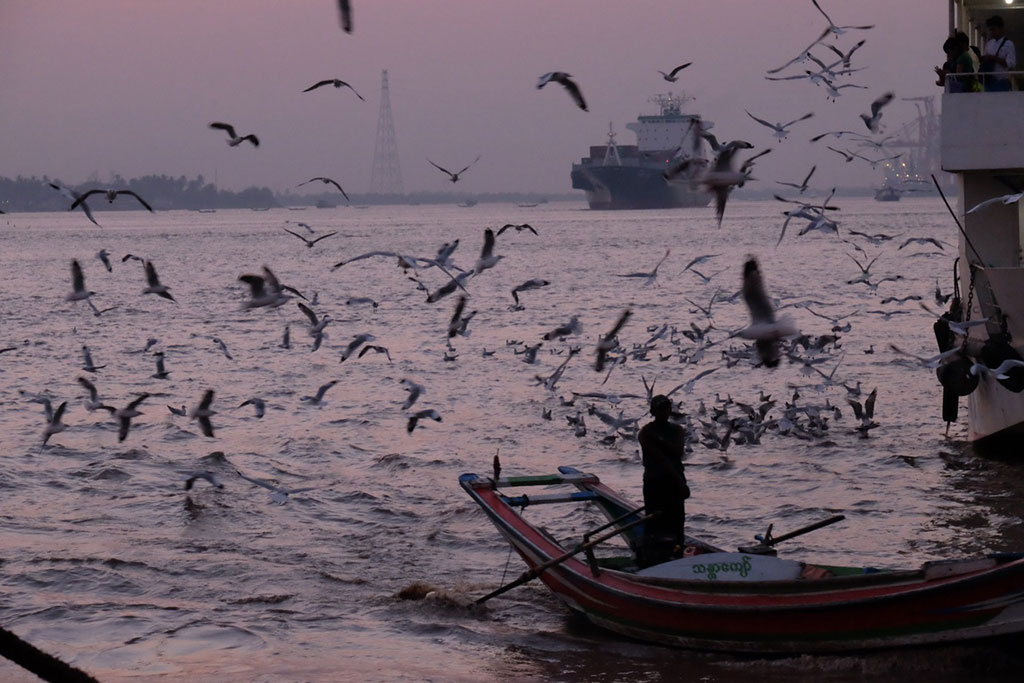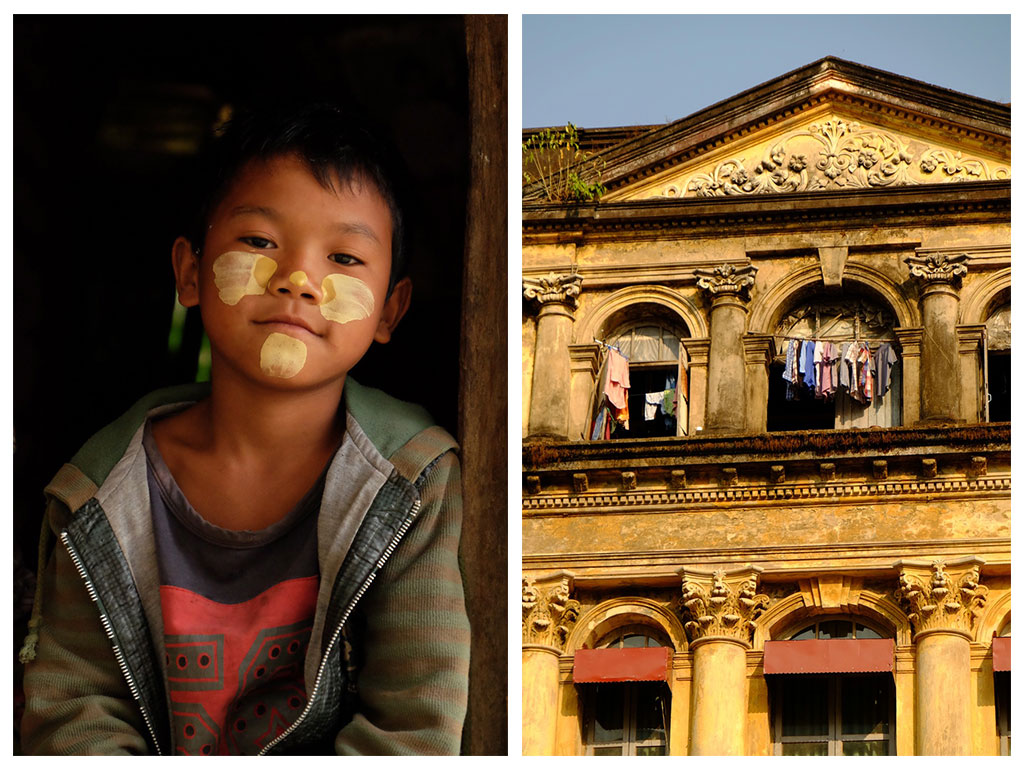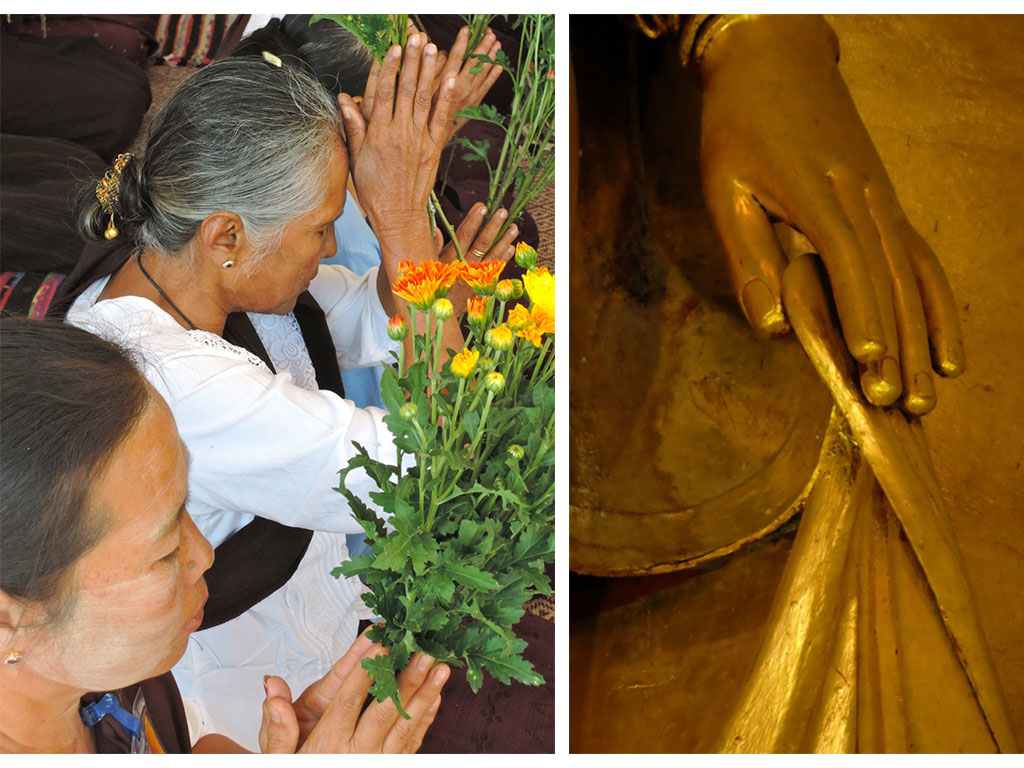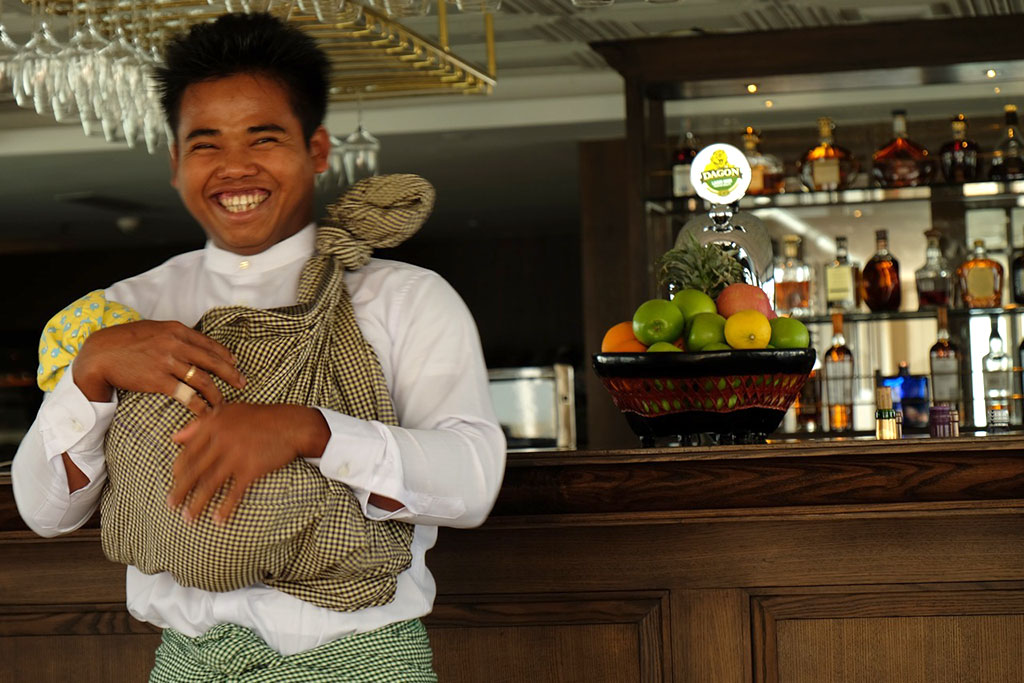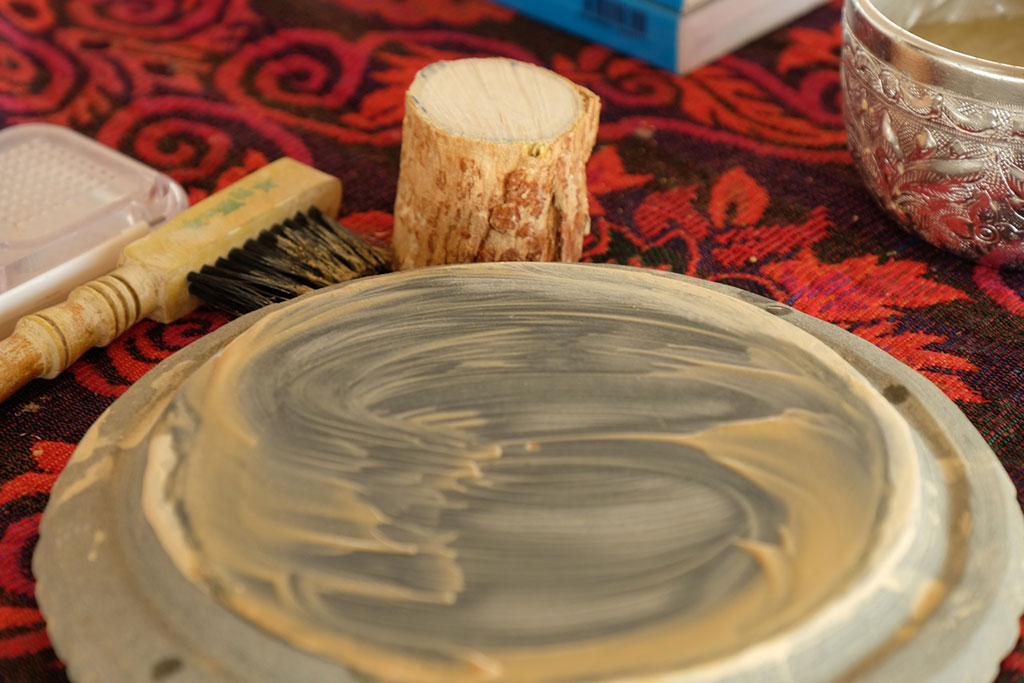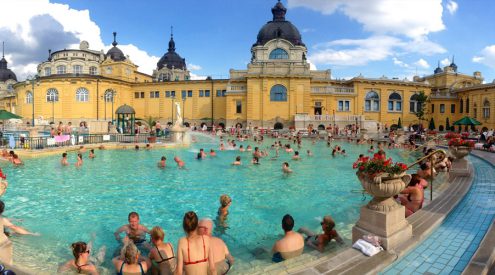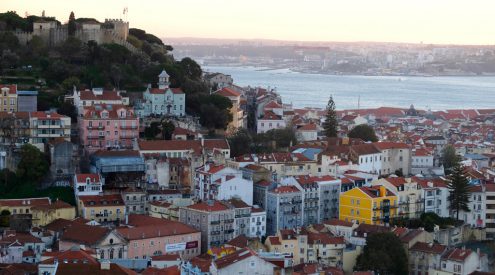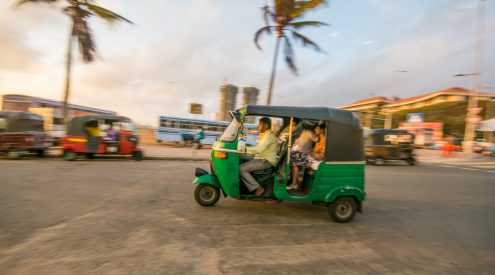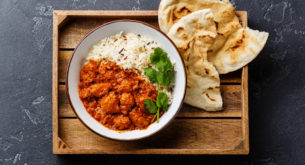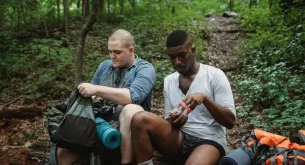Myanmar, formerly Burma, is still mostly untouched by globalisation. Slowly, but steadily – since the country has opened up to tourism, after years of being closed – people are visiting this land.
Words and photographs by Gillian McLaren.
Myanmar is the 54th country I’ve had the privilege of exploring, but I would call it my best trip so far! The isolation from other nations means that the ethnic groups and tribal cultures are still thriving. Buddhism and temple life permeates the culture and is the centre of community life.
The busy, bustling harbour on the Ayeyarwady River, opposite The Strand Yangon. Photo by Gillian McLaren.
Yes, I saw cell phones in the hands of young people in Yangon, which was Rangoon. I observed teenage boys sporting coloured hair with short sides, as is the current fashion. However, all the men still wear the longhi, or sarong-like fabric, with a casual shirt or a smart cotton jacket. My hotel, The Strand Yangon, is set in the vibrant old city, surrounded by grand colonial period buildings steeped in tradition from the colonial era, with delicious high teas and fine-dining, whirring ceiling fans, a smoking bar and butler to unpack your clothes.
Yet, just over the road from the hotel, at the Yangon harbour, is a market selling dried fish, plucked chickens with yellow feet, various kinds of fried food, slip-slops (the shoes worn by almost everyone) and handmade cotton bags.
In the rural areas, the longhi is used in many different styles, from wearing it right to the ground for going to the village market, through to medium length when working, to short when in water to bathe, plant crops or make water gardens.
A young Burmese lad wearing thanaka paste; Part of the colonial legacy of Myanmar, this beautiful building near to The Strand Yangon now houses many families. Photo by Gillian McLaren.
Women and children, plus some men, slather their faces with thanaka, a paste made daily from ground bark with added water, which acts as a sunscreen, moisturiser and creative outlet.
In one of the million temples purported to exist in Myanmar, I saw ladies with pretty leaf-shaped thanaka on their lovely round faces. This paste is used all over the country, whether in the city or a small water village.
Each morning thanaka paste is made on a flat stone, then placed on the cheeks to decorate each face and offer protection from the sun. Photo by Gillian McLaren.
Women also wear the longhi, but in different colours and patterns from the men. They use it to hold shopping, to sling babies, to protect their faces from wind or sun, as well as to shield their modesty when they bathe in the Ayeyarwady River or Inle Lake.
Historically, the country had its origins in Bagan, a village on the Ayeyarwady River, which reputedly offers 350000 temples, with more being constructed all the time. The area is a UNESCO World Heritage site and is astounding to see, especially from the vantage point of a hot air balloon, above the plains that twinkle from the gold of the pagodas.
A few of the 350000 temples of Bagan, seen at sunrise on a misty morning. Taking a balloon ride over Bagan is an unforgettable experience. Photo by Gillian McLaren.
I stayed in Blue Bird Hotel Bagan in a verdant garden, with swimming pool and al fresco restaurant on a dust road in a village, walking distance from some of the extraordinary temples. From here, I walked in the village taking photos of wooden ox-carts, fascinating street food, people in front of their homes and – of course – the fabulous temples. I was invited into one of these homes for lunch, which was one of the highlights of my trip for its spontaneity and the generosity of my hosts.
Local people employed in my hotel taught me about aspects of Myanmar culture, but were circumspect about their political views. In Blue Bird Hotel’s open-air restaurant, I tried Mohinga – the national breakfast dish – a delectable seafood broth with rice noodles and fresh herbs. Variations of this dish occur in the different people groups. Food is available in teashops, or the wet-market, food stalls or from individual salespeople that carry food in a basket on their head and shout out their speciality, like sticky rice.
Women worshipping Buddha and bringing offerings to him; In a temple in Bagan, the hand of a huge gilded image of Buddha, as he picks up his cloak to travel, to journey. Photo by Gillian McLaren.
The time to go to Myanmar is now, before MacDonald’s does. Local people are still interested in tourists and open to us, not jaded or materialistic. Except for a few young women who admired my lipstick colour and shyly asked if they may have some, I did not feel harangued or pressurised to buy. Everything that is for sale, is what Myanmar people themselves use.
Step back in time and observe hand ploughed land, hand-sewn seeds blown on the wind and authentic ethnic life.
How to get to Myanmar
Longhi can be folded and used to carry a baby or for shopping. As this is usually used by women, the man is amused to be showing us how to do it! Photo by Gillian McLaren.
If you’ve got the bucks, the Business Class cabin is spacious, open and decorated in soothing tones. Having an ergonomically designed flat bed, the longest and widest of any commercial airline, I slept soundly. Generous storage space, intuitive seat and entertainment system controls, fabulous food and wine served by efficient staff made this an exceptionally comfortable and enjoyable long-haul option.
Economy return flights from Johannesburg cost from R10500.
Stay here
Blue Bird Hotel, Bagan is set in a verdant garden, with swimming pool and al fresco restaurant, which is an oasis, on a dust road in a village walking distance from some of the extraordinary temples. Costs from R1800 per person.The Strand Cruise is the perfect way to get from Bagan to Mandalay – in pure luxury, enjoying excellent food – exploring fabulous temples and local life along the Ayeyarwady river, with musical and puppet shows by local artists, plus demonstrations on how to wear a longhi and facial tanakha paste. Rates vary depending on the number of days, time of year and the cabin chosen.
Hotel by the Red Canal , Mandalay is a boutique hotel in a welcoming space enclosing a lush garden with water features. It has a striking Pagoda-style roof, red teak furniture, floors and staircases and provides lavish amenities. From R4000 per person.
Sanctum Inle Resort is tranquil and elegant, with high ceilings and selected teak furniture. Set in a large garden including Tamarind trees, it boasts views over an infinity swimming pool to paddy fields and Inle Lake, with the Shan mountains in the distance. Well sited for day boat trips to water villages. Costs from R2360 per room.
Should we visit a country where there are terrible things happening?
The situation with the Rohingya people on the western border of Myanmar is ethnic cleansing. This is a tragic and complex state of affairs that began in 1982, with the Rohingya people losing their status as a tribe of Myanmar.
As travellers, we are faced with the decision to travel to places where there are human rights infringements, or not to. Do we visit China when they imprison political dissidents, eat our abalones and seahorses and plunder our ivory? Do we visit India where there is child labour? Do we visit Thailand, Cambodia or Philippines where there is a rampant child sex trade? Should we visit Saudi Arabia and Yemen where women are severely oppressed? There does not seem to be a simple answer, so it remains a personal choice.
If we stay away will that change the situation? Could there be merit in engaging with the people in these countries, rather than simply judging? Certainly in Myanmar, the people are poor and a drop in the emerging tourist trade would remove work from many people. As the conflict area is on the western border, far from any tourist spots, there is no physical danger to travellers.





